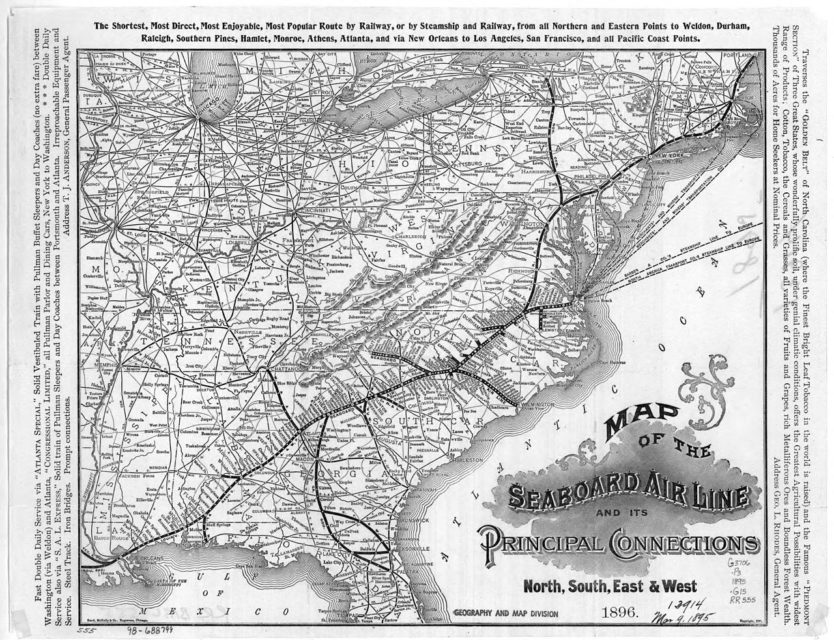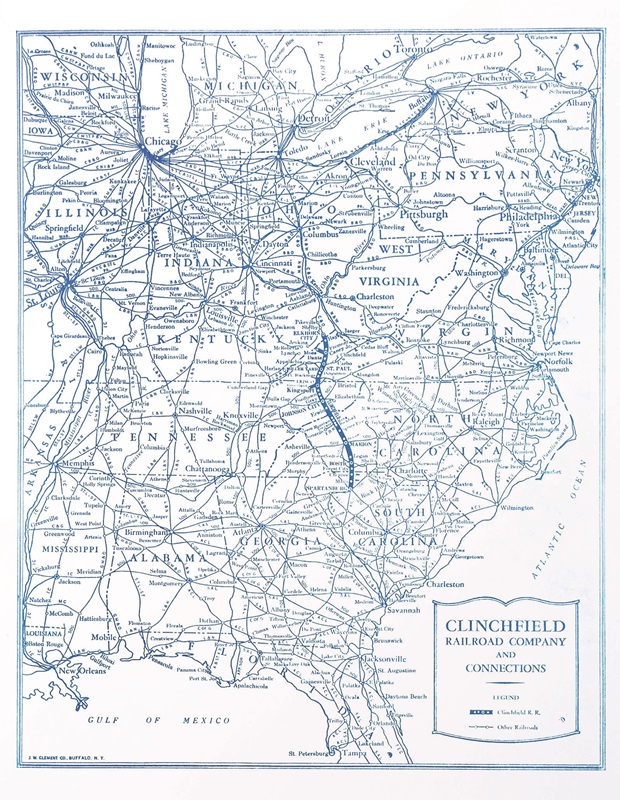All Carolina folk are crazy for mayonnaise, mayonnaise is as ambrosia to them, the food of their tarheeled gods. Mayonnaise comforts them, causes the vowels to slide more musically along their slow tongues, appeasing their grease-conditioned taste buds while transporting those buds to a place higher than lard could ever hope to fly. Yellow as summer sunlight, soft as young thighs, smooth as a Baptist preacher’s rant, falsely innocent as a magician’s handkerchief, mayonnaise will cloak a lettuce leaf, some shreds of cabbage, a few hunks of cold potato in the simplest splendor, restyling their dull character, making them lively and attractive again, granting them the capacity to delight the gullet if not the heart. Fried oysters, leftover roast, peanut butter: rare are the rations that fail to become instantly more scintillating from contact with this inanimate seductress, this goopy glory-monger, this alchemist in a jar.
The mystery of mayonnaise — and others besides Dickie Goldwire have surely puzzled over this — is how egg yolks, vegetable oil, vinegar (wine’s angry brother), salt, sugar (earth’s primal grain-energy), lemon juice, water, and, naturally, a pinch of the ol’ calcium disodium EDTA could be combined in such a way as to produce a condiment so versatile, satisfying, and outright majestic that mustard, ketchup, and their ilk must bow down before it (though, at two bucks a jar, mayonnaise certainly doesn’t put on airs) or else slink away in disgrace. Who but the French could have wrought this gastronomic miracle? Mayonnaise is France’s gift to the New World’s muddled palate, a boon that combines humanity’s ancient instinctive craving for the cellular warmth of pure fat with the modern, romantic fondness for complex flavors: mayo (as the lazy call it) may appear mild and prosaic, but behind its creamy veil it fairly seethes with tangy disposition. Cholesterol aside, it projects the luster that we astro-orphans have identified with well-being ever since we fell from the stars.
Tom Robbins, Villa Incognito, 2004.
May 9, 2022
QotD: Mayonnaise
March 4, 2021
Fallen Flag — the Seaboard Air Line Railroad
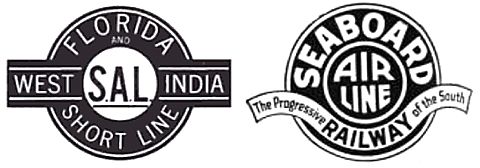
Seaboard Air Line logos used in print advertising, circa 1900 (left) and 1916 (right).
Wikimedia Commons.
This month’s Classic Trains fallen flag feature is the Seaboard Air Line by Larry Goolsby. The railroad’s earliest antecedent was originally chartered in 1832 to build a rail line from Portsmouth, Virginia to Weldon, North Carolina, a port on the Roanoke River which flows into Albemarle Sound. The Portsmouth & Roanoke began operation in 1834 and changed its name to the Seaboard & Roanoke around 1838 after several financial reorganizations and refinancing efforts. In 1837, the first passenger fatalities in US railroad history occurred in a head-on collision between a eastbound lumber train hit the westbound passenger train from Portsmouth on 11 August. Three young women were killed in the accident, all members of the Ely family.
Along with most other railroads in the Confederate states, Virginian and North Carolinian railroads were seriously damaged physically in the fighting and became political footballs during the Reconstruction Era. In the 1880s, the Seaboard and Roanoke was one of several railroads merged to form the Seaboard Air Line Railway which extended from Virginia to Georgia. The name Seaboard Air Line was in use well before the legal merger as a marketing device to help attract traffic.
The “Air Line” name was often used by railroads of the period to denote a route supposedly “as straight as the crow flies.” It was a reasonably direct run from Portsmouth to Weldon, but the Air Line label would be more than hype when in the 1880s Seaboard acquired a line linking Hamlet and Wilmington, N.C., which included a 79-mile tangent track, longest in the U.S.
As the 19th century closed, the SAL system came under control of a group led by John Skelton Williams, who added a line from Richmond, Va., to Weldon, and acquired the Florida Central & Peninsular, transforming what had been a Portsmouth–Atlanta carrier into a north-south line. In 1900, the various SAL roads were incorporated as Seaboard Air Line Railway with its coastal main line from Richmond going through Raleigh, Columbia, and Savannah to Jacksonville and Tampa.
While the World War II years strained SAL’s resources the railroad shouldered the load with new EMD FTs, secondhand steam engines from Western Maryland and Chicago & North Western, and installation of block signals and centralized traffic control over large portions of its main line. Wartime income helped the carrier emerge from receivership in 1946 as Seaboard Air Line Railroad.
High-profile wrecks, several involving passenger trains, spurred quick postwar completion of the signaling and modernization campaign. SAL’s earliest CTC installation had started south from Richmond in 1941. By the early 1950s, signals covered most mainline mileage, keeping the operation competitive with its double-tracked neighbor Atlantic Coast Line.
Seaboard added more streamlined cars from Budd in 1947 and lightweight sleepers from several builders beginning in 1949. The Silver Star name was given to what had been a second section of the Meteor, and the two “Silver Fleet” members held down the first-class New York–Florida trade. The Silver Comet was added to the New York–Birmingham route. Seaboard continued to maintain its premier trains to high standards into the 1960s, proudly calling itself “The Route of Courteous Service.” The Meteor and Star names survive on Amtrak’s New York–Miami route.
As with so many North American railways after World War II, the Seaboard faced stiff competition not only from direct competitors like the Atlantic Coast Line, but also from trucks diverting freight onto the interstate highway system but also from airlines whisking its passengers more rapidly to holiday destinations in Florida. The economic situation was clear in the mid-1950s and Seaboard applied for government approval to merge operations with rival Atlantic Coast in 1958, but did not get through the legal obstacle course until 1967 when the merger was formalized as the new Seaboard Coast Line Railroad.
March 5, 2020
Fallen flag — The Clinchfield Railroad
This month’s fallen flag article in Classic Trains magazine recounts the story of the Carolina, Clinchfield & Ohio, later known as the Clinchfield Railroad:
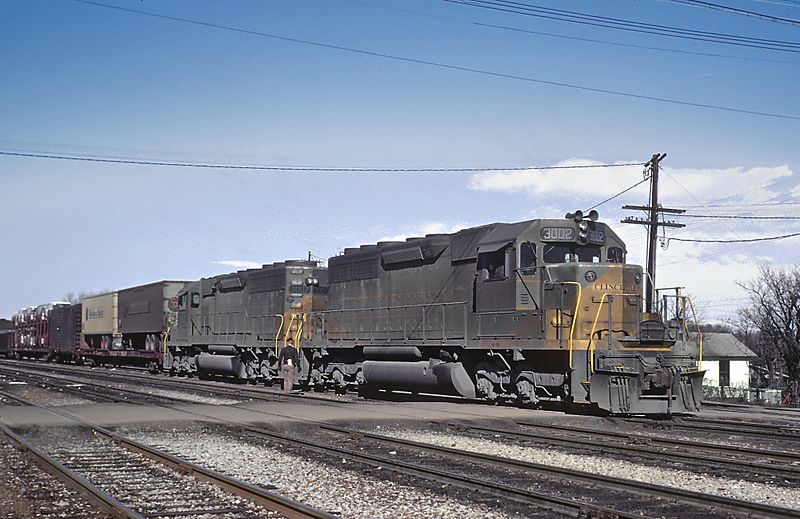
Clinchfield Railroad SD40 locomotive number 3002 at Spartanburg, SC in February 1968.
Roger Puta photo via Wikimedia Commons.
The Clinchfield was different. It was conceived by men who had the vision and resources to do things right. It was built to the highest engineering standards of the early 20th century. It never went through a financial failure or reorganization. Indeed, the Carolina, Clinchfield & Ohio Railway was the antithesis of traditional railroad evolution.
In 1902, a wealthy regional businessman, George L. Carter, began stitching together an integrated industrial enterprise to develop vast coal deposits in the Clinch (River) Fields of southwest Virginia and to deliver the coal across the southern Appalachian mountains to markets in the Carolinas and to ships calling at Wilmington, Charleston, Savannah, and Jacksonville. Carter, from whom Howard Hughes could have learned a thing to two about secrecy, operated using the South & Western Railway banner. The name said everything … and nothing. The S&W was chartered from any point on the Atlantic Ocean to any point on the Great Lakes. Carter agents seized by legal means and/or physical occupation key terrain features through the mountains in competition with the Chesapeake & Ohio and the Southern Railway.
Clinchfield Railroad map. The Clinchfield’s 277-mile, 5-state line stretched from Elkhorn City, Kentucky, to Spartanburg, South Carolina.
Map via Classic Trains.Within that generous charter was the idea of building a railroad to haul coal south and merchandise in both directions between the Midwest and the Southeast. The plans also incorporated development of several on-line cities to consume coal and make products from regional resources to diversify and grow the freight business. Finally, a steamship line was organized to move coal beyond the ports to customers in the Caribbean.
By 1905, Carter realized he needed far more capital than he could personally provide. Reluctantly, he managed to convince Blair & Co., a big Wall Street investment house, to finance the project. M. J. Caples, an engineer with mining and railroad experience, laid out and then built a magnificent low-grade, high-capacity railroad. Tunnels, steel viaducts, generous fills, and rocky cuts appeared as needed. More than 4 percent (almost 10 miles) of the line was underground in 55 tunnels. With construction of the 277-mile railroad well advanced, its name was changed to Carolina, Clinchfield & Ohio Railway in 1908.
Coal began flowing across the 242 miles from Dante, Va., to Spartanburg, South Carolina, in 1909 while the owners and engineers debated how to cross the Cumberland mountains into the Ohio River valley. Between 1912 and 1915, a 35-mile extension including what was then the 10th-longest tunnel in the U.S. created a through route connecting Chesapeake & Ohio at Elkhorn City, Kentucky, with the three major southeastern carriers (Seaboard at Bostic, North Carolina; Atlantic Coast Line and Southern at Spartanburg). In constant-value dollars, the five-state CC&O was the most expensive railroad ever built in the U.S.
April 27, 2014
Gerrymandering
Former US Supreme Court Justice John Paul Stevens has published a book in which he calls for certain amendments to the constitution, one of which is quite appealing:
1. Requiring that congressional and state legislative districts be “compact and composed of contiguous territory” to stop both parties from carving out safe seats.
US electoral districts can be particularly odd creatures. In a post from 2010, Zombie looks at the “top ten” gerrymandered districts … and they’re hard to believe. Here’s North Carolina-12, number 10 on the list:
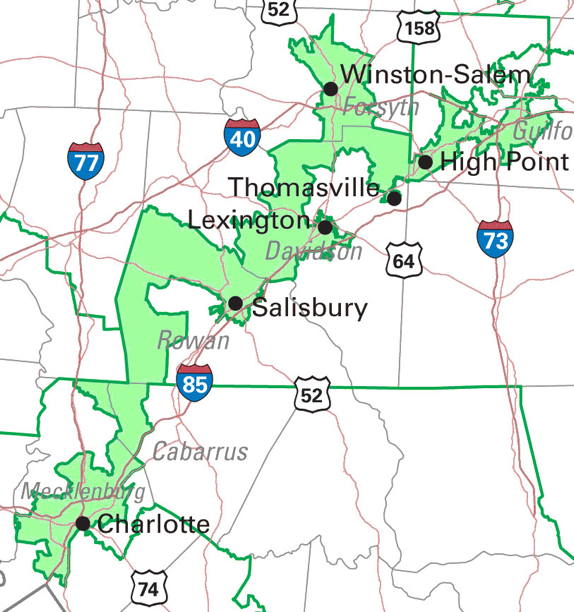
This is what most people imagine when they think of a gerrymandered district — what I call “Gerrymander Classic.” NC-12 looks very much like the gerrymandered districts of the 19th century, but taken to extremes. As bad as it is, NC-12 at least looks like a congressional district, with meandering lines, consistent width, and hand-drawn appearance. As we’ll soon see, modern gerrymandering is often another animal altogether, with jarring shapes and artificial boundaries that are not just offensive to the eye but somehow feel like an insult to rationality.
Coming in at number 5, it’s Illinois-17:
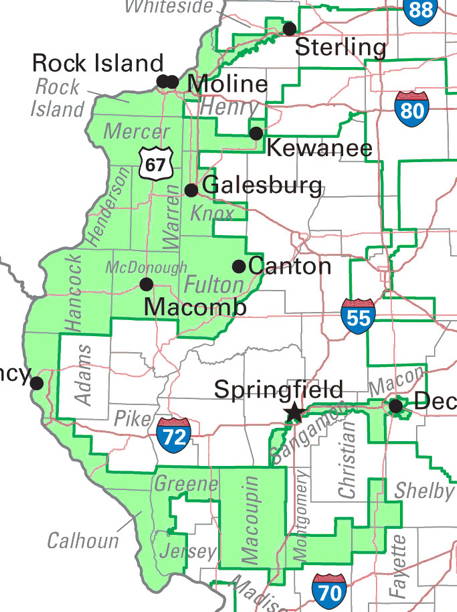
Political scientists love to cite IL-17 as the prototypical gerrymandered district, and you are likely to see IL-17 used as the illustration in many academic treatises about redistricting. And we can see why here. Its shape has often been described as “a rabbit on a skateboard,” though to me it looks more like an embryonic ichneumon wasp with a pancreatic cyst. We saw above how PA-12 was a gerrymandering blunder by the Republicans; IL-17 is the opposite, a gerrymandered district created by Democrats to ensure themselves a seat in western Illinois — but which this year was snatched from their grasp by Tea Party candidate and now congressman-elect Bobby Schilling. Ooops! The Democrats went out on a limb when drawing IL-17 — several limbs, by the looks of it — but the wave election of 2010 changed the electoral landscape. Let me repeat my warning to over-confident redistricters next year: THINGS CHANGE. Gerrymander at your own risk.
And finally, the circa 2010 winner of the most gerrymandered district in the United States award, Illinois-4:

Here it is: The most ridiculous congressional district in the entire country. No, you’re not looking at two districts; IL-4 has two absurdly gerrymandered halves held together by a thin strip of land at its western edge that is nothing more than the median strip along Interstate Highway 294. The end result is a gerrymandered gerrymander, a complete mockery of what congressional representation is even supposed to be. As with AZ-2, the intention behind IL-4 was to create an ethnic enclave, in this case an Hispanic-majority district within an otherwise overwhelmingly non-Hispanic Chicago. Problem is, Chicago has two completely distinct and geographically separate Hispanic neighborhoods — one Puerto Rican, the other Mexican — but neither is large enough to constitute a district majority on its own. Solution? Lump all Hispanics together into a supposedly coherent cultural grouping, and then carefully draw a line surrounding every single Hispanic household in Chicago, linking the two distant neighborhoods by means of an uninhabited highway margin. Voila! One Hispanic congressperson, by design. And as a side-effect, the most preposterous congressional district in the United States.
The kicker? Those ten are at least legal in that they’re contiguous. Zombie goes on to show some even more outrageous examples where that requirement is blatantly ignored.
October 9, 2013
Craft brewers against the big breweries in North Carolina
The rising tide of craft brewing runs up against the entrenched political interests of the big brewers in Raleigh:
North Carolina politicians in Raleigh like to say they’re pro-jobs and pro-business.
But what happens when lawmakers are forced to pick sides between new, small businesses growing jobs and big legacy businesses trying to hold on to the market share they’ve got? Would it help you to know that the big legacy companies give hundreds of thousands of dollars in campaign contributions and the new small businesses are not yet organized?
There’s just such a battle brewing in North Carolina over beer — and who gets to distribute and market it. It pits a growing number of small craft brewers against big distributors. And the big distributors who are among the largest campaign contributors have state lawmakers on their side.
The number of craft breweries in North Carolina is growing rapidly. The state ranks 10th in the country in the number of craft breweries (70) but drops to 19th in overall beer production. Some small brewers say they could grow faster and generate more local jobs in North Carolina if lawmakers weren’t forcing them to hire outside distributors.
Lawmakers capped the amount of beer brewers can make before they are forced to hire outside distributors to transport and market their product. The law sets the cap at 25,000 barrels per year or 775,000 gallons.
One Charlotte brewer is joining others in pushing back against the cap — saying it’s bad for business and a job killer.
Update: I guess it would help if I included the link to the original article…
November 23, 2012
The bridge that eats trucks
It’s a bridge so fearsome that it has its own website for breathtaking footage of trucks coming to grief at 11’8″:
If you’re paying attention this week when you drive that tall truck down South Gregson Street, you’ll get fair warning about the low bridge ahead.
A series of yellow diamond signs, starting a block in advance, will tell you about the 11-foot, 8-inch clearance.
Then the yellow lights will go crazy, the ones with an overhead sign that says: OVERHEIGHT WHEN FLASHING.
You’ll have one last chance to escape disaster. You can turn onto Peabody Street, just before Gregson runs beneath the railroad bridge that carries freight and passenger trains across downtown Durham.
But if you’re not paying attention — you dummy! — you’ll make plenty of noise as you crash into that low bridge. It will peel the roof off your moving van. It will scatter the hay bales or building supplies stacked much too high on your flatbed.
It might leave your box truck wedged beneath the overpass. The tow-truck driver will have to deflate your tires before he can haul your sorry self away.
You can watch a collection of truck decapitation clips here: http://11foot8.com/
September 9, 2012
Winner of the Democratic convention? Conservative trolls
Dave Weigel on the fascinating fact that a few conservatives were able to successfully troll the Democratic convention in Charlotte:
Whatever lessons the Democrats take from Charlotte, whatever it did for the president or for the ambitious senators and governors who stalked delegate breakfasts and whispered “2016,” this is a fact: The convention was successfully trolled.
I don’t use troll in the pejorative sense. Actually, I may be trying to craft a neutral meaning of troll where none previously existed. The term, in its modern Internet usage, refers to people who want to start fights online to bring the universe into an argument on their terms. It comes not from Grimm literature, but from a fishing technique in which multiple lines are baited and dragged to haul in the maximum amount of cold-bloods.
Democrats did not expect to spend Wednesday arguing about the capital of Israel and the appearance of the word “God” in their platform. There were, reportedly, 15,000 members of the media in Charlotte, of whom maybe 14,980 could have given a damn about the party platform. On Tuesday night, when the Obama campaign and the DNC released its platform, none of the bigfoot media outlets in town spent time on the text.
[. . .]
Maybe the word “historic” is out of place for the modern convention. To say that they’re clichéd and staged is, in itself, a staged cliché. But who thought, just 11 months after the launch of the Occupy movement, that 99 percenters would have less influence on the platform than conservative media?
This is what I mean: We live in the age of trolling. Any comment made online, if it’s given the right forum, is as relevant as any comment made by some media gatekeeper. Think about a politician or a journalist on Twitter, and what he sees. If a colleague wants to tell him something, it appears in his feed with an @ symbol. If someone who just logged on and wants to bait a nerd logs on, he will send a message that appears with an @ symbol. Both are equally valid, at least in how they appear on-screen or on a phone. There is no ghetto-izing of comments into the bottom of a page, or into media that you don’t pay attention to.
February 18, 2012
The North Carolina school lunch story continues
Remember the original story from a few days ago that lots of conservative and libertarian bloggers jumped on right away: the child whose packed lunch was deemed unhealthy so she had to eat cafeteria chicken nuggets and the bill sent home to the parents? That story was denied and several sources insisted it was a deliberate reframing of an innocent situation. However, there’s now a second parent form that school who says the same thing happened to her child:
Diane Zambrano says her 4-year-old daughter, Jazlyn, is in the same West Hoke Elementary School class as the little girl whose lunch gained national attention earlier this week. When Zambrano picked Jazlyn up from school late last month, she was told by Jazlyn’s teacher that the lunch she had packed that day did not meet the necessary guidelines and that Jazlyn had been sent to the cafeteria.
The lunch Zambrano packed for her daughter? A cheese and salami sandwich on a wheat bun with apple juice. The lunch she got in the cafeteria? Chicken nuggets, a sweet potato, bread and milk.
[. . .]
When Jazlyn said she didn’t eat what her mother had made her, Zambrano went to her teacher and demanded to know what happened. She said the teacher told her an official had come through that day to inspect students’ lunches and that those who were lacking certain food groups were sent to the cafeteria. After she received her cafeteria food, the teacher told Zambrano, Jazlyn was told to put her homemade lunch back in her lunchbox and set it on the floor.
Zambrano said the teacher told her it was not the first time student lunches have been inspected, and that officials come “every so often.”
[. . .]
The memo Jazlyn brought from the school outlines the necessary nutritional requirements students’ homemade lunches must contain: two servings of fruit or vegetables, one serving of dairy, one serving of grain and one serving of meat or meat substitute. Included with the memo was a separate sheet, this one a bill for the cafeteria food Jazlyn was served.
The memo, dated Jan. 27 with the subject line “RE: Healthy Lunches,” was signed by school principal Jackie Samuels and said, while “we welcome students to bring lunches from home … it must be a nutritious, balanced meal with the above requirements. Students, who do not bring a healthy lunch, will be offered the missing portions which may result in a fee from the cafeteria.”
June 15, 2011
Daily link roundup
More links that don’t quite make it as separate blog entries.
- North Carolina shipwreck officially recognized as being Queen Ann’s Revenge, the flagship of the infamous pirate Blackbeard. “The Queen Anne’s Revenge, a captured French slave ship, was part of a four-vessel pirate flotilla when it ran aground in 1718 beside the inlet leading to Beaufort and was abandoned. The wreck was found a little more than a mile off the beach in 1996 by Intersal, a private salvage company. The location precisely matched historical accounts of the grounding, and the ship appeared to be the right vintage and size and was armed to an unusual degree. And from the first, the artifacts brought up fit the origins of the ship, the crew and the places it was known to have visited.”
- If more reporters (and bloggers) followed John Rentoul’s list of forbidden words and phrases the internet would be only a few megabytes in size (really, those phrases seem to appear in every article and blog post lately). “The original Banned List was, of course, George Orwell’s in 1946: dying metaphors (“Examples are: Ring the changes on, take up the cudgel for, toe the line, ride roughshod over, stand shoulder to shoulder with, play into the hands of, no axe to grind, grist to the mill, fishing in troubled waters, on the order of the day, Achilles’ heel, swan song, hotbed”); verbal false limbs (“Characteristic phrases are render inoperative, militate against, make contact with, be subjected to, give rise to, give grounds for, have the effect of, play a leading part (role) in, make itself felt, take effect, exhibit a tendency to, serve the purpose of”); pretentious diction (“Words like phenomenon, element, individual (as noun), objective, categorical, effective, virtual, basic, primary, promote, constitute, exhibit, exploit, utilise, eliminate, liquidate”); and meaningless words (his examples included “class, totalitarian, science, progressive, reactionary, bourgeois, equality”).”
- Significantly different approaches by Canadian and British militaries to dealing with “operational security” over Libyan operations. “It is interesting to contrast the amount of information the Canadian Forces releases on its missions in Libya. It talks about the war in general terms but CF spokesman Brig. Gen. Richard Blanchette claims that detailing the type or numbers of bombs dropped on targets (or even naming specific targets) would violate operational security.” The British, in contrast, are eager to tell how many bombs (and of what type) were dropped from which aircraft and which Royal Navy vessels were involved in combat operations.
- I was happy to see that Rogier van Bakel is now working with some co-bloggers at a new URL. Here’s the round-up of who, what, and where.

